Marketers today depend on multichannel strategies to successfully conduct offline and online marketing campaigns. Even though this approach allows marketers to personalize each step of the customer journey, it poses a distinctive challenge when determining the impact of digital campaigns on marketing ROI.
Today, a consumer uses approximately six touchpoints before buying a product or service, compared to only two a decade ago. So, marketing teams must plot customer journeys and determine the best channels to leverage.
When creating a profitable, predictable marketing strategy, running reports on channels in isolations such as open email rates and web traffic won’t cut it. Unless you understand the impact of engagement, the reports will be mere vanity metrics.
Most marketers find it challenging to get visibility into this type of attribution analytics data. They have to access multiple data from various sources and spend even more time making sense of numbers in spreadsheets. That is unless they are leveraging marketing attribution.
Table of contents
What is marketing attribution?
Marketing attribution is a method of evaluating the ROI or value of the channels they use to connect with potential customers. In a nutshell, it’s the means through which channels customers discover and purchase your products or service.
It seems pretty straightforward when you only think about the sale. But rarely do customers head straight to your website and make a purchase, right?
Several channels and messages were used to influence purchase decisions, including the email they received after signing up for your newsletter or the Facebook ad they clicked on.
In a perfect world, marketers can monitor the whole sales cycle with personal anecdotes from every customer and why they decided to make the purchase decision. However, that is not scalable or realistic.
There are numerous touchpoints, which is why operational marketing roles are becoming very complicated. Fortunately, marketing attribution models can help account for multichannel selling.
Why marketing attribution is important
Attribution is a way to determine the success of advertising campaigns. It allows you to calculate the ad dollars spent based on the number of conversions gained. Advertisers, partners, and app developers may be unable to determine how much is spent on each ad and the payout for a successful conversion without accurate attribution.
Marketing attribution is crucial for optimizing all types of advertising campaigns.
You can improve every aspect of your advertising by tracking user behavior and understanding how they react to paid activity.
Attribution is an integral part of marketing. It affects everything in the advertising ecosystem, from determining how much space costs to measuring campaign performance.
Types of marketing attribution models
An attribution modeling is a set of rules governing how credit for sales and closed revenues are allocated back to buyer touchpoints. There are two main marketing attribution models: Single-touch Attribution and Multi-touch Attribution.
A reliable marketing attribution model offers insight into:
- The message the customers were exposed to and from which channel
- Which touchpoint influenced customers to make a purchase decision
- The role of message sequencing
- The role of brand perception in decision making that resulted in conversion.
- The effects of external factors (such as how gas rates impact car sales)
- Which messaging drives top results from each customer
Difference between single-touch, multi-touch, and weighted multi-source attribution models
The individual customer journeys will differ if you offer different products through multiple channels. Other roads lead to Rome.
Customers who buy your product will likely have been through different touchpoints. Different attribution models can help determine how other touch points lead to a purchase.
There is a distinction between single-touch and multiple-touch in attribution models. If you only measure one touch, you will use Single-touch Attribution. First-touch Attribution and last-touch Attribution are great examples of a single touch.
Multi-touch models can be used to analyze attribution in a closer way to develop more complex marketing strategies. Examples of multi-touch attribution include the following:
- Linear: Equal credit is given to all the touchpoints.
- W-shaped: Lead creation, first touch, and opportunity creation. (Opportunity creation is when you add customer information to your company CRM, like LeadSquared, for example).
- Time decay: Focused on recent marketing touchpoints.
- U-shaped: First touch and lead creation (when a prospect fills in a form with their contact details).
- Full Path: First touch, lead creation, opportunity creation, and final close.
These models can be used to track and analyze various marketing types and monitor customer journeys.
Weighted Multi-Source Attribution allows you to recognize all interactions throughout the sales cycle and assign specific weights to the touchpoints with the most significant impact. This model can give you the best view of your customer journey, allowing you to see which areas are performing well and need improvement. However, it can be challenging to use effectively.
Single-touch attribution model
A single-touch attribution model is precisely what it sounds like. But we’ll explain. These attribution models credit 100% of a sale to one touchpoint. There are two single-touch attribution models: first-touch Attribution and last-touch Attribution.
First-touch attribution
As the name implies, this single-source model gives credit to the consumer’s first contact with your brand. It could be their first visit to your website. They may also interact with your content or in some other way that introduces you to them.
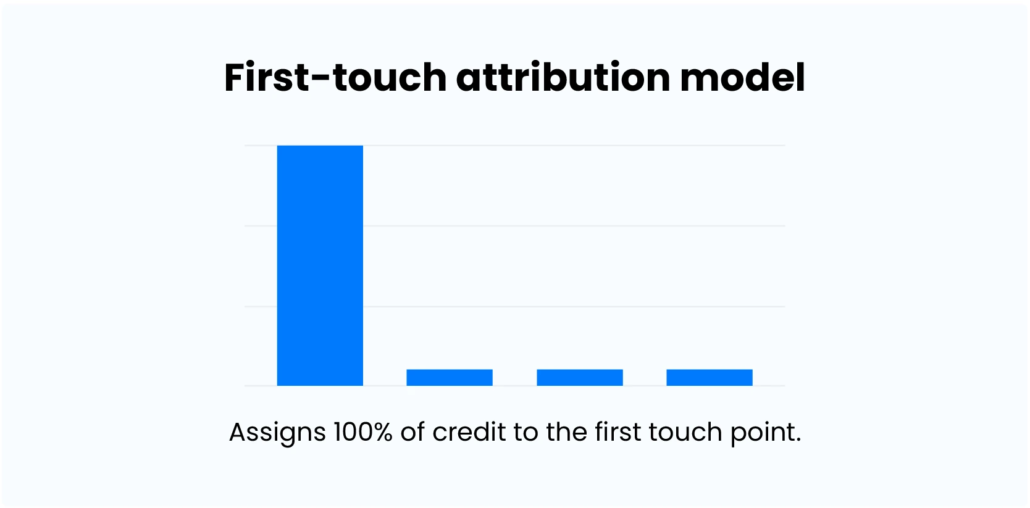
This method of attribution would be used in social media to give credit to consumers who first saw a brand on Instagram. It’s easy to understand and implement. However, it does not provide visibility to lower-funnel touchpoints. When focusing on lead and demand generation, it is best to use the first touch attribution model.
Last-touch attribution
Contrary to the first-touch attribute, this form of marketing attribution credits the final touchpoint, which leads to a sale.
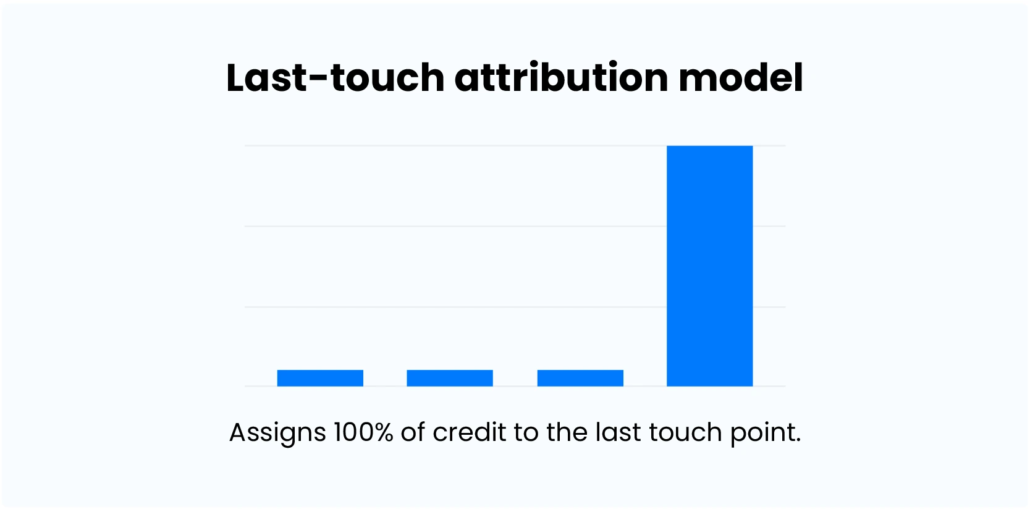
It doesn’t consider any consumer interactions before. It is easy to use and straightforward. However, it can’t track the initial consumer interactions that lead to your brand. If your goal is to drive conversions, the last-touch model is best.
Multi-touch attribution models
Multi-touch attribution models divide credit according to predetermined rules. The attribution model type that you choose will determine the credit split. Let’s now take a look at each one in more detail:
Linear attribution model
The linear attribute model gives equal credit to all touchpoints a lead has made during their buyer’s path. Let’s look at an example.
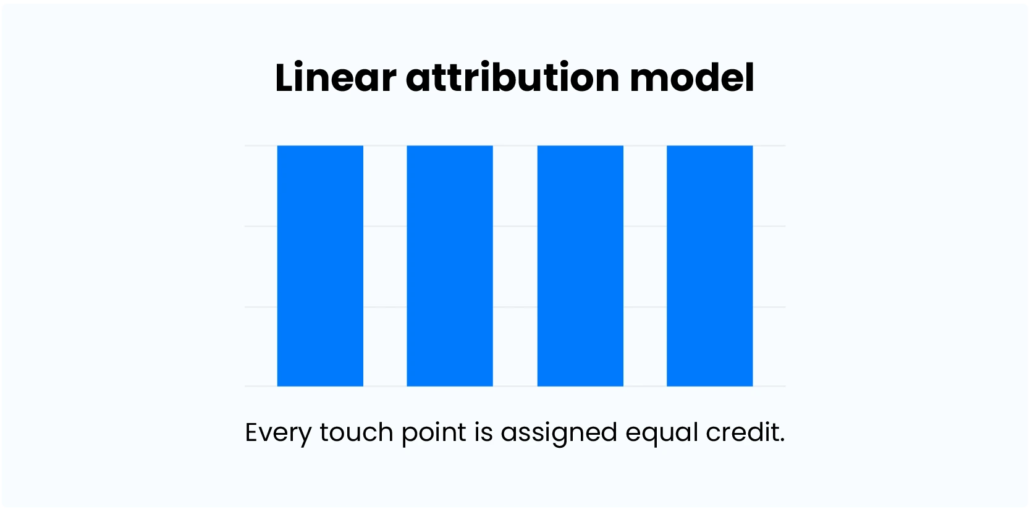
A user clicks on a Google advertisement and visits your site for the first time. They search for your brand three days later and sign up for your newsletter. They return via email a few days later. Finally, they make a sale through a direct search. Linear Attribution would give each touchpoint 25% of the credit.
Time-decay attribution model
This model weighs each touchpoint in the purchase funnel differently. This model gives more credit to the recent interactions. It is helpful in understanding which channels are motivating customers to purchase.
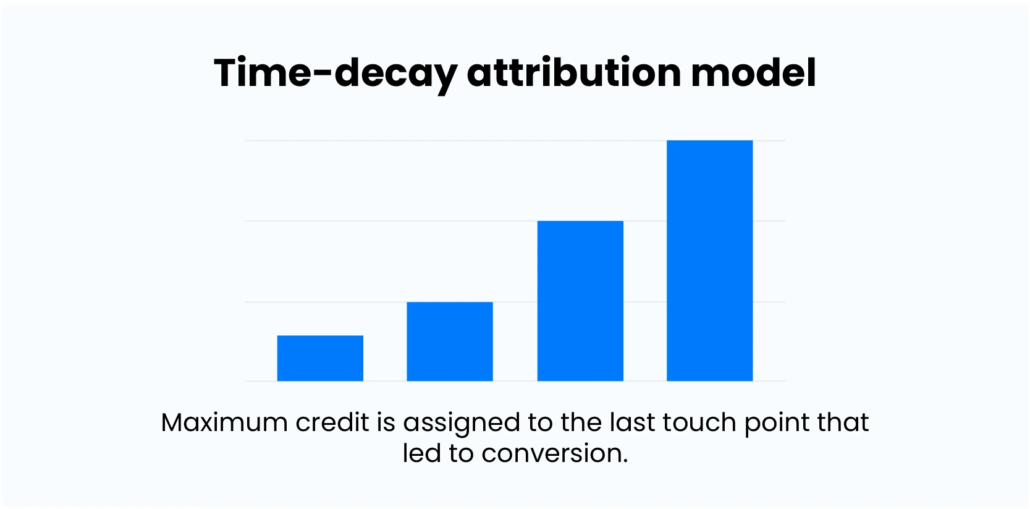
However, it assumes that the last touchpoints impacted the conversion or sale. The time-decay model is best for longer sales cycles like B2B marketing.
U-shaped attribution model
The u-shaped or position-based attribute model, also known as the attribution model with a u-shape, prioritizes credit for two critical key touchpoints, the first and the last. The model also takes into consideration other touchpoints.
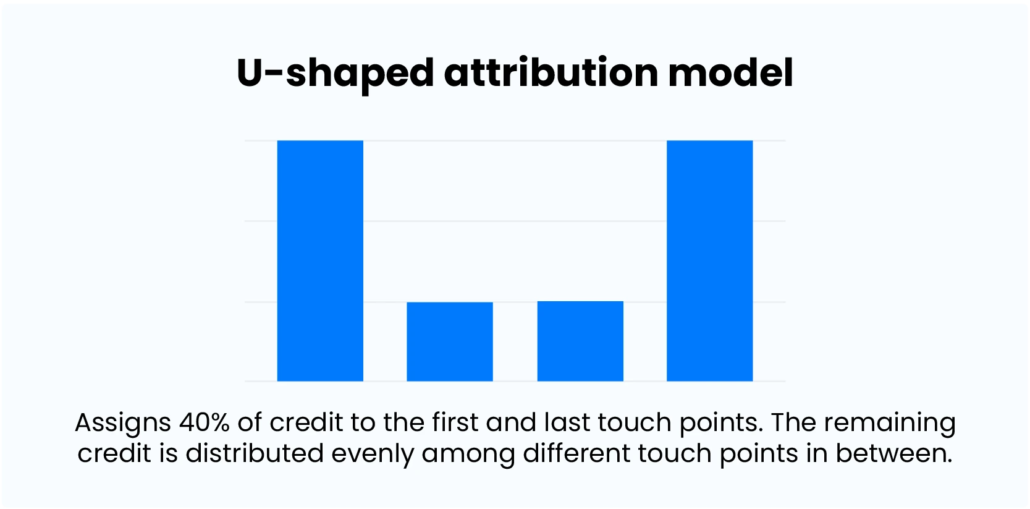
Suppose prospects contact you first via Google Search, then look at your Instagram pages and sign up for your newsletter. The first and last touch points will get a 40% value, while the second touchpoint will get the remaining 20%.
A u-shaped attribution model is a good option if you have multiple touchpoints during the customer journey. But it assumes that the most valuable touchpoints will be the first and last. They may not be in real life.
Full-path attribution model
The model is based on the W-shaped model. This includes the final close. The main idea is that most credit is given to significant milestones along the customer journey. However, touchpoints between these milestones are also given a lower weight.
The most crucial benefit of this model is its ability to account for sales teams’ post-opportunity interactions. They are given the same weight and importance as early-stage marketing activities.
W-shaped attribution model
W-shaped multi-touch attribution W-shaped in shape gives credit to the first, last, and middle touchpoints of the buyer’s journey. All remaining touchpoints receive equal credit.
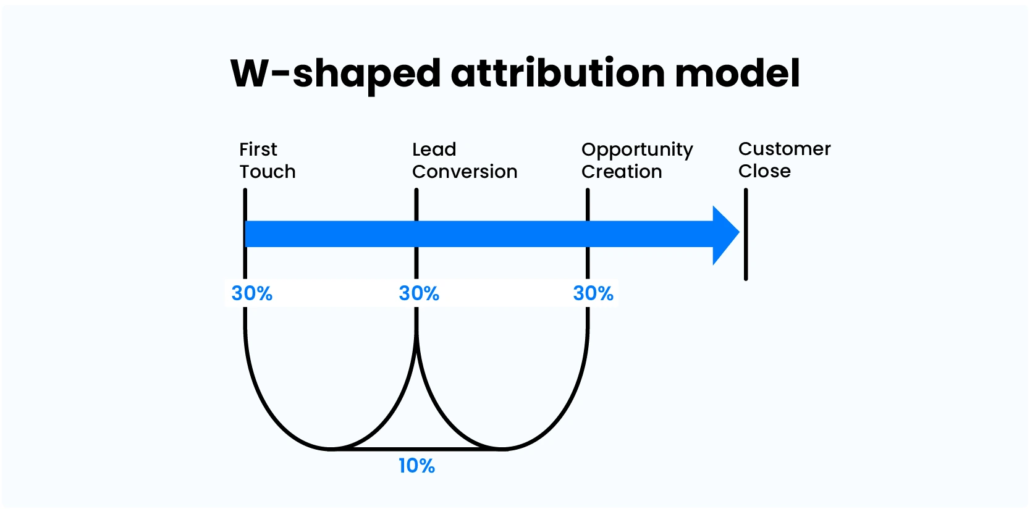
Suppose you want to identify touchpoints that convert leads, but also the touchpoints that encourage customers and motivate them to continue their buyer’s journey. In that case, a W-shaped Attribution is a good option.
Custom attribution model
The algorithmic or custom attribution model, also known as the algorithmic attribution model, is a customized model that can be tailored to your industry, channel, and buying habits. This model lets you assign your value or attribution weight through a custom model.
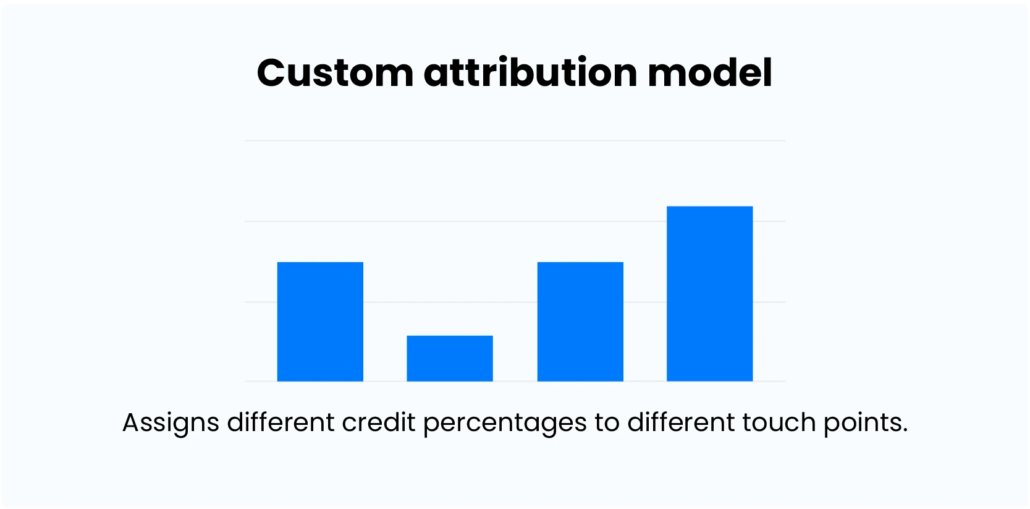
Technically, it isn’t easy to set it up. It requires a large amount of data and takes a lot to troubleshoot. This model is undoubtedly the best, as it offers the most detailed look into what drives your conversions.
The custom attribution model works best for brands with long buying cycles and lots of historical data. Machine learning can more accurately distribute weight across different marketing touchpoints using this data.
Choosing the right marketing attribution model and marketing tools
When choosing a marketing attribution model, it is vital to consider every aspect of your brand. Who are you targeting? What are your preferred channels? Do you want to start your brand or grow your audience via lead generation? Consider the following when choosing common attribution models:
Number of touchpoints
The more touch points included in the sales cycle, the more nuanced and detailed the attribution model must become. Simple last/first-touch models can be sufficient for campaigns with few touchpoints (such as PPC campaigns).
Sales cycle length
To be effective, longer sales cycles require attribution models that can work across the whole cycle. Because the tracking cookie only has a short lifespan, first-touch Attribution is often ineffective in these situations. Because it accounts for gradual increases in interest throughout the cycle, a time-delay model is better.
Target channel
Multi-touch Attribution is unnecessary if your focus is on one channel (such as SEO). Choose a “last channel” attribution model instead to show ROI for marketing efforts.
Your goals
The types of marketing attribution model you choose should be based on the outcome you are trying to measure. A first-touch model is sufficient if your goal is to create demand. A last-touch model is best if you are trying to measure conversions. A multi-touch model will be a good choice if your goal is to measure success across the entire marketing funnel.
The benefits of marketing attribution
Understanding which marketing channels and trends drive leads and sales in your business is more important than ever. This will ensure that your marketing efforts and dollars make a difference. Attribution is not a questionable concept.
Most marketers understand that knowing which marketing channels and tactics drive website traffic is essential. But it is worth mentioning the practical benefits of a good attribution program.
Knowing how prospects are most likely to be influenced can help reduce costs and maximize your ROI.
Marketing attribution helps you:
Cut costs on ineffective marketing
Smart marketers know how to save money. One dollar spent on ineffective placements can be saved and used to generate results elsewhere. However, without a well-tuned attribution model, it is difficult to determine which dollars are being used for conversions.
It is crucial to understand how different media strategies influence conversion. Cutting costs on a high-cost-per-conversion business strategy and channeling that money into high-performing channels can reduce your total spending while sustaining your results.
Suppose your marketing budget has reached a point of diminishing returns, or your results have stagnated. In that case, it’s a good idea to identify low-performing channels. You can reduce costs while still maximizing your sales efforts.
Maximize marketing ROI
Most marketing decisions will be made based on ROI. Knowing which channels have the most influence can help you determine where to spend incremental funds to improve results. It is crucial to understand which levers you should pull to get the desired results for the business’s long-term success.
Attribution models let you validate spending on tactics and channels that promote brand consideration and awareness, so long as they guide a potential customer along the purchase path.
A well-structured attribution model can show you if these early consumer engagements can result in a subsequent purchase – usually credited to a lower-funnel channel like direct navigation and branded paid search.
Understand and optimize prospective customer interactions
Multichannel digital marketing is becoming more common every day. Customers can be reached via digital display, influencer marketing, email, and organic social. Attribution modeling lets us see how prospects respond to these messages and move through our sales funnel.
In a rapidly changing world, there are many channels, platforms, and tools. A robust attribution model can help you see how they interact with each other to increase conversion.
After a customer visits your website and is retargeted using ads through a display network on Google, it may be more beneficial to follow up with an Instagram campaign or pay for placement.
Your attribution model will reveal how customers interact with your messages, touchpoints, and these platforms’ interactions. This will allow you to create the most effective and efficient path to purchase for as many prospects as possible. Understanding customers’ behavior better will help you serve them efficiently.
Well-tuned attribution models will help you create path-to-purchase paths, enabling you to tailor your marketing efforts to your ideal customers. Knowing your customers’ needs will allow you to reach them at the most relevant points to influence them. This will help you build stronger connections, increase brand loyalty and increase customer lifetime value.
Intelligent marketing decisions
Marketing attribution can help decision-makers determine what the future holds regarding media and marketing decisions. Channel attribution allows marketers to see how each campaign performs and where they are positioned in customer journeys.
This will enable them to make better decisions and change their course of action, resulting in more conversions and engagements. Timely, targeted marketing decisions significantly affect the company’s bottom line.
Get a holistic view of marketing data
Marketers are constantly receiving marketing data from every channel. Sometimes it becomes too complex to predict future outcomes or identify new opportunities. Channel attribution combines data from all channels to enable businesses to identify what motivates customers and how they behave – across different touchpoints and devices.
It is crucial to understand how each channel impacts the other. Cross-channel Attribution provides the best way to gain deeper insights into your marketing strategies and understand customers more intimately. It provides marketers with the data and numbers necessary to predict future events and aids them in making informed marketing decisions.
How to measure and report marketing attribution
There are various ways you can go about measuring marketing attribution. Firstly, you can choose to use analytics software, for example, Google Analytics. By using analytics tools, you can view leads, conversions, and sources of web traffic.
Accordingly, you can easily use the data from the tool you’re using to analyze your website visitors, for example. This will allow you to improve your digital marketing strategy, as you’ll take the guessing work out of the equation in order to drive results for your business.
You can also use CRM software to determine the effectiveness of your marketing campaigns basis lead sources.
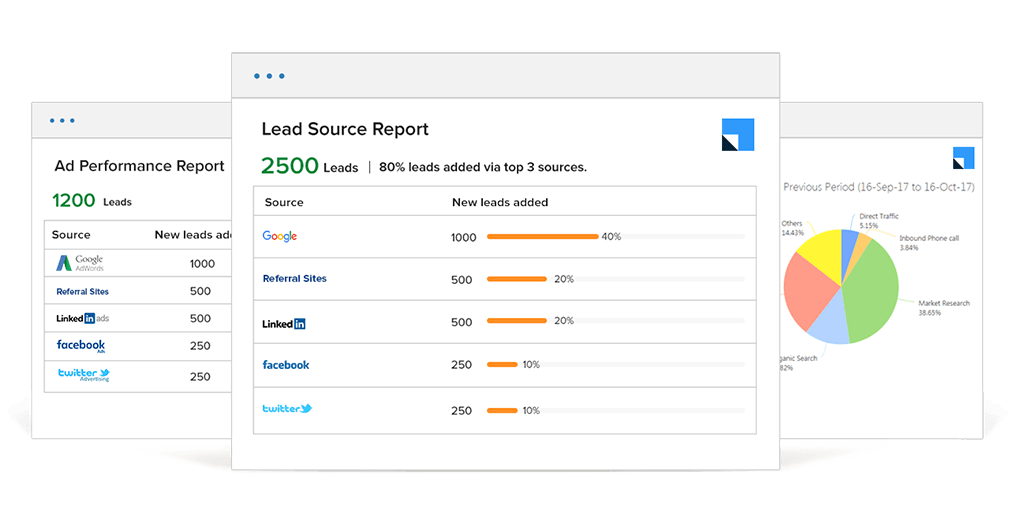
Furthermore, by using the attribution models discussed below, you’ll be able to know exactly which campaigns have been the most successful in driving revenue and sales.
When it’s necessary to use attribution reports
It becomes necessary to use attribution reports when you want to understand which channels are accruing leads, return customers, or most revenue. With this information, you can allocate your budget accordingly and choose which channels to develop, which to leave, and which to drop.
Final thoughts
Marketers have a wide range of advanced attribution models that can help them understand consumer behavior and the touchpoints that affect the path to conversion. But, not every model can provide accurate and comprehensive marketing attribution measurements for all channels.
Marketers must combine models to gain top-down and bottom-up insights to optimize campaigns.









